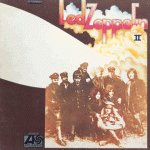More of The Band
More Roots Rock LPs

- A killer copy of an absolutely essential album with Nearly Triple Plus (A++ to A+++) grades on both sides – just shy of our Shootout Winner
- One of the most difficult albums to find great sound for, but the music makes it worth all the time and trouble we spent finding this outstanding copy
- Huge amounts of deep bass (something that only the best Robert Ludwig-mastered original pressings can offer), meaty guitars and silky vocals make this pressing of The Band’s second album a very special listenng experience indeed
- Problems in the vinyl, especially for this title, are sometimes the nature of the beast with vintage LPs – there simply is no way around them if the superior sound of analog is important to you
- 5 stars: “As had been true of the first album, it was the Band’s sound that stood out the most… The arrangements were simultaneously loose and assured, giving the songs a timeless appeal…”
The lucky person who takes this record home is in for quite a shock. This very pressing is proof positive that this album is much better recorded than the audiophile community gives it credit for being. How could anyone judge the sound of the record without a great copy such as this one to play?
This vintage pressing has no trace of phony sound from top to bottom. It’s raw and real in a way that makes most pop records sound processed and wrong. These two sides have plenty of the qualities we look for in an album by The Band. Energy, presence, transparency, Tubey Magic… you name it, you will find it here. Its biggest strength — and the biggest strength of the album as a whole — is its wonderful, natural midrange.
And the bass is huge. On the better copies it always is.
Drop the needle on “The Night They Drove Old Dixie Down” or “King Harvest Has Surely Come” and get ready for some serious Analog Magic. This is The Band’s second album like you have never heard it before.
Overview
This copy has superb space in the midrange — it was wider, deeper and clearer than practically all of the Robert Ludwig originals we played (which are, of course, the only way to go on this album). Few copies were this full-bodied, solid, meaty and rich, yet clear. It was so tubey, never dry, unlike more copies than we care to remember.
Despite what anyone might tell you, it’s no mean feat to find good sounding copies of this record. There are good originals and bad originals, as well as good reissues and bad reissues. Folks, we’ve said it many times — the label can’t tell you how a record sounds, but there’s a sure way to find out that information. You’ve got to clean ’em and play ’em to find out which ones have Hot Stampers, and we seem to be the only record dealers who are doing that, in the process making unusually good pressings like this one available to you, the music-loving audiophile.







